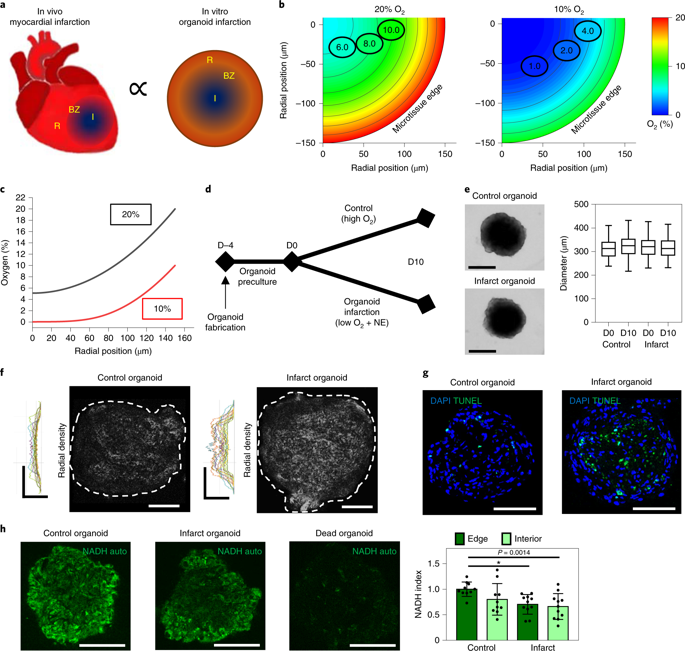当前位置:
X-MOL 学术
›
Nat. Biomed. Eng.
›
论文详情
Our official English website, www.x-mol.net, welcomes your
feedback! (Note: you will need to create a separate account there.)
Human cardiac organoids for the modelling of myocardial infarction and drug cardiotoxicity.
Nature Biomedical Engineering ( IF 26.8 ) Pub Date : 2020-04-13 , DOI: 10.1038/s41551-020-0539-4 Dylan J Richards 1, 2 , Yang Li 1 , Charles M Kerr 3 , Jenny Yao 1, 4 , Gyda C Beeson 5 , Robert C Coyle 1 , Xun Chen 1 , Jia Jia 1 , Brooke Damon 1 , Robert Wilson 6 , E Starr Hazard 7 , Gary Hardiman 7, 8, 9 , Donald R Menick 10, 11 , Craig C Beeson 5 , Hai Yao 1 , Tong Ye 1 , Ying Mei 1, 12
Nature Biomedical Engineering ( IF 26.8 ) Pub Date : 2020-04-13 , DOI: 10.1038/s41551-020-0539-4 Dylan J Richards 1, 2 , Yang Li 1 , Charles M Kerr 3 , Jenny Yao 1, 4 , Gyda C Beeson 5 , Robert C Coyle 1 , Xun Chen 1 , Jia Jia 1 , Brooke Damon 1 , Robert Wilson 6 , E Starr Hazard 7 , Gary Hardiman 7, 8, 9 , Donald R Menick 10, 11 , Craig C Beeson 5 , Hai Yao 1 , Tong Ye 1 , Ying Mei 1, 12
Affiliation

|
Environmental factors are the largest contributors to cardiovascular disease. Here we show that cardiac organoids that incorporate an oxygen-diffusion gradient and that are stimulated with the neurotransmitter noradrenaline model the structure of the human heart after myocardial infarction (by mimicking the infarcted, border and remote zones), and recapitulate hallmarks of myocardial infarction (in particular, pathological metabolic shifts, fibrosis and calcium handling) at the transcriptomic, structural and functional levels. We also show that the organoids can model hypoxia-enhanced doxorubicin cardiotoxicity. Human organoids that model diseases with non-genetic pathological factors could help with drug screening and development.
中文翻译:

用于心肌梗死和药物心脏毒性建模的人类心脏类器官。
环境因素是心血管疾病的最大诱因。在这里,我们展示了包含氧扩散梯度并受到神经递质去甲肾上腺素刺激的心脏类器官,模拟了心肌梗塞后的人类心脏结构(通过模仿梗塞区、边界区和远端区域),并概括了心肌梗塞的特征。特别是转录组、结构和功能水平上的病理代谢变化、纤维化和钙处理)。我们还表明,类器官可以模拟缺氧增强的阿霉素心脏毒性。用非遗传病理因素模拟疾病的人类类器官可以帮助药物筛选和开发。
更新日期:2020-04-24
中文翻译:

用于心肌梗死和药物心脏毒性建模的人类心脏类器官。
环境因素是心血管疾病的最大诱因。在这里,我们展示了包含氧扩散梯度并受到神经递质去甲肾上腺素刺激的心脏类器官,模拟了心肌梗塞后的人类心脏结构(通过模仿梗塞区、边界区和远端区域),并概括了心肌梗塞的特征。特别是转录组、结构和功能水平上的病理代谢变化、纤维化和钙处理)。我们还表明,类器官可以模拟缺氧增强的阿霉素心脏毒性。用非遗传病理因素模拟疾病的人类类器官可以帮助药物筛选和开发。











































 京公网安备 11010802027423号
京公网安备 11010802027423号